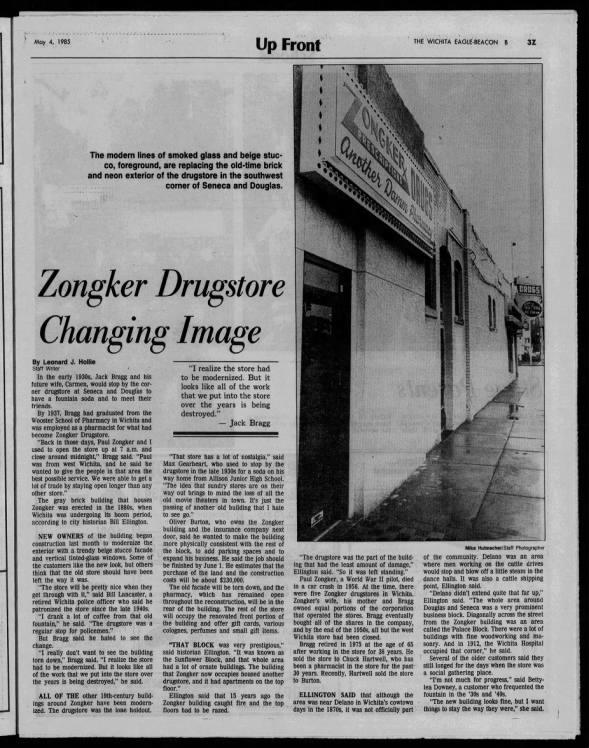Ghost signs dating back to ’30s or before revealed on under-construction Wichita building
Few things make local history buffs more giddy than when a construction project reveals a “ghost sign” — an old, hand painted advertisement from decades ago that has somehow been preserved.
It just happened again in Wichita’s Delano neighborhood. And though these new ghost signs aren’t as vibrant as, say, the bright orange-and-blue “pharmacy” sign revealed on the Suhm building at Douglas and Madison in 2015, they’ve caught the attention of people who remember frequenting the businesses that operated there decades ago.
The new ghost signs showed up several weeks ago when construction workers removed decorative stucco put up in the 1980s on the east-facing side of a building at 1101 W. Douglas, which sits on the southwest corner of Douglas and Seneca. Construction crews now have a fence around the building and are working on turning it into a new headquarters for Lange Real Estate, which has been in business for 43 years.
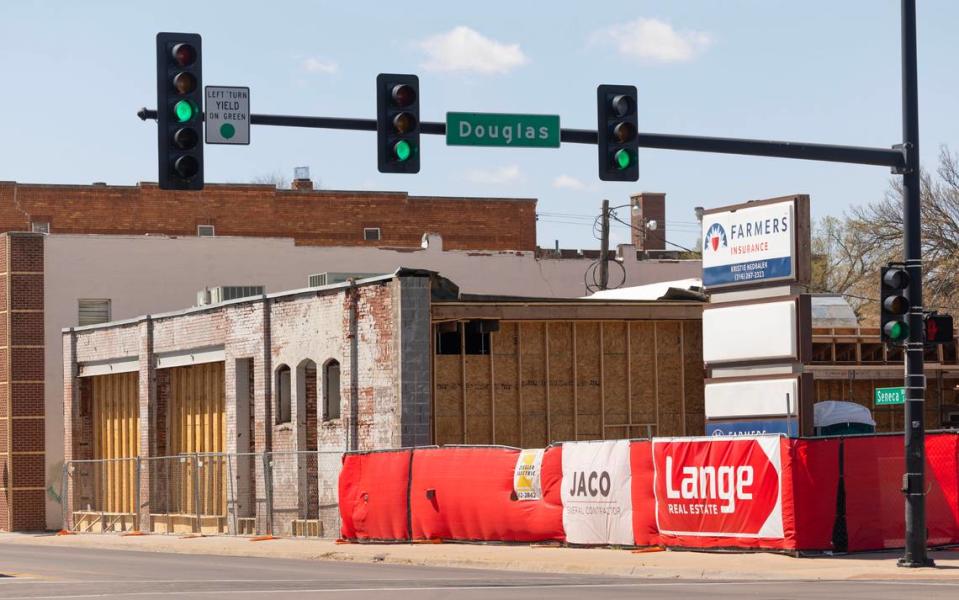
When the stucco came down, faint painted signs were visible underneath. On the northernmost part of the building facing Seneca, part of the words “cigar” can be made out. Above it are the letters “ca,” which could have been the beginning of the word “candy.” And above that appears a “dru,” undoubtedly part of the word “drugs.”
Farther south on the building, the word “hotel” can be faintly seen painted vertically on either side of a long, skinny window.
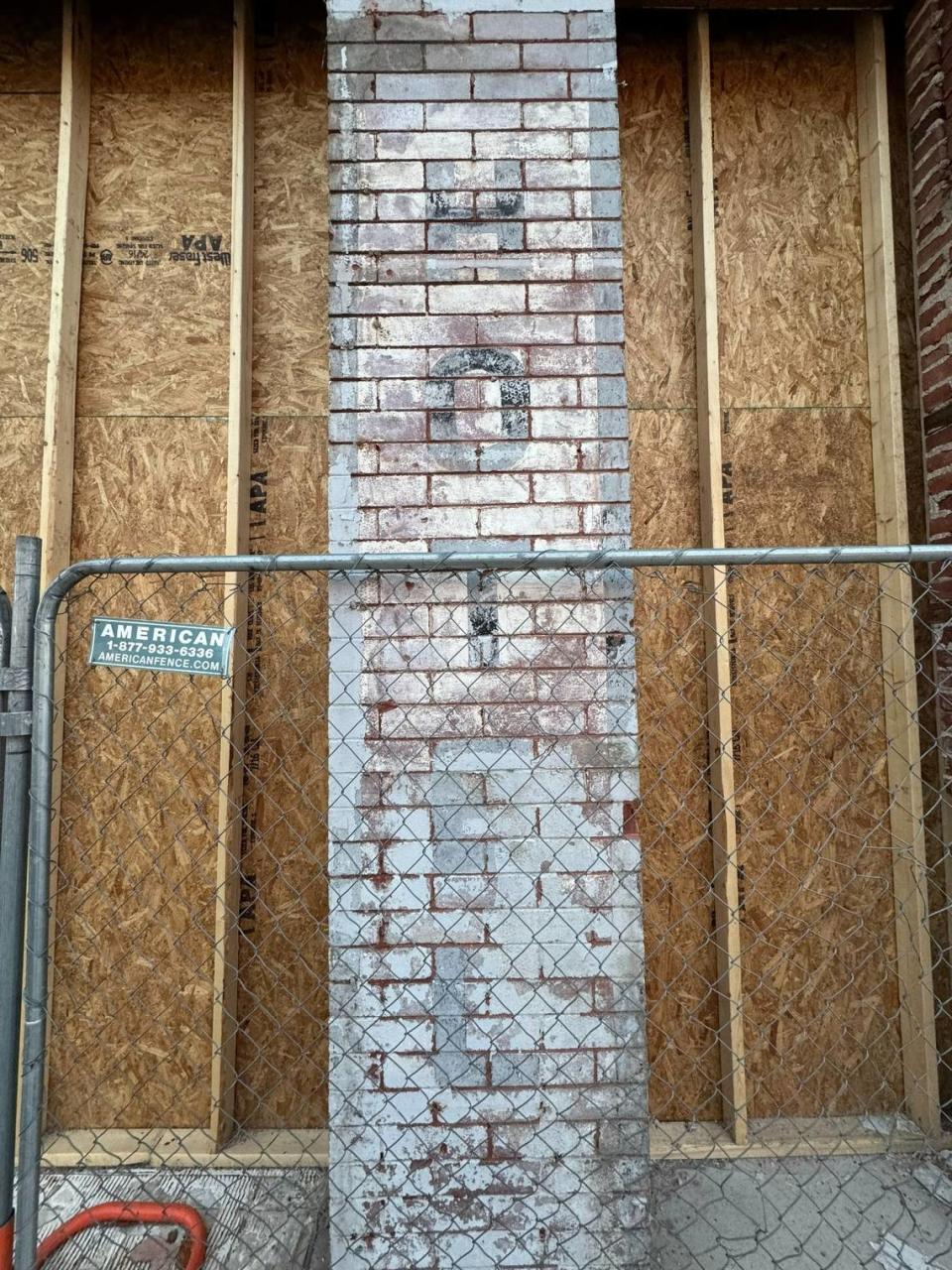
When the signs appeared, local history buffs started buzzing, especially on social media, and started sharing what they knew about the businesses that may have originated the now uncovered signs.
After lots of research, aided by old Wichita Eagle clips, local historian Mike Maxton, the Wichita-Sedgwick County Historical Museum’s Jami Tracy and Lange Real Estate’s Joe Robertson, a picture of the building’s former life began to form.
The structure went up in 1905, according to Sedgwick County property records. Back then, that part of Douglas and Seneca was a busy and growing business area, known as the “Sunflower Block.”
Initially, the building had two stories and stretched all the way to the sidewalk on Douglas, occupying the space that has served as a parking lot for the building’s most recent tenants, which included an insurance office. But in the mid-1980s, the front part of the building was demolished. It looks like demolition crews chopped the front portion off right in the middle of the “a” in the word “cigars” then scraped the pad up to the sidewalk. Today, a jagged line of brick attached to cinder blocks can be seen at the spot where the rest of the building was once attached.
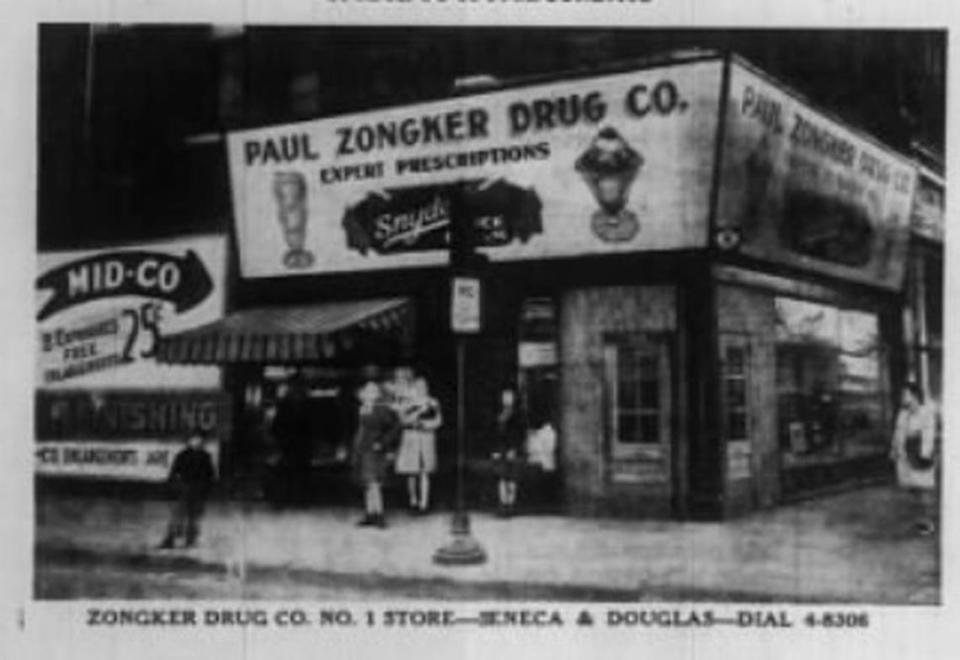
That now-missing part of the building, where the parking lot is now, is best known to longtime Wichitans as the home of Wichita’s first Zongker Drug, which opened around 1939. Owned by Paul Zongker, a World War II pilot who died in a car crash in 1956, the Zongker store at Douglas and Seneca was the first of what would eventually be five Zongker stores around town. It had a soda fountain, and an ad in The Wichita Beacon from February 1946, meant to celebrate the opening of the Zongker Drug No. 2 at 13th and Waco, also included a photo of the store at Douglas and Seneca.
The photo shows the front corner of the building, which is fitted with a big billboard advertising Snyder’s ice cream. The sign is decorated with pictures of an ice cream sundae and a milkshake and also advertises that Zongker sells Arnholz coffee at its soda fountain and that it carries “a complete Colgate line,” including hair tonic, and “toilet and hand soaps.” It also announces that a registered pharmacist is on duty seven days a week.
Zongker Drug was in business through the late 1980s at Douglas and Seneca. Commenters on social media said that they’d frequent the store when they were students at Allison Middle School farther south on Seneca. The rumor was that if school was in session, the Zongker manager would call and report that truant students were in the store.
In the 1930s, the intersection of Douglas and Seneca was a busy one: Dockum Drug Co. operated one of its Wichita stores right across the street, on the southeast corner, and the big Wichita Hospital — which lasted from 1895 until it closed in 1961 and was razed in 1972 — was on the northwest corner, where Quiktrip is now.
But Zongker Drug wasn’t the first drug store to occupy the space. Its first tenant was Riley Drug Store, which opened in 1909. Before Zongker took over in the late 1930s, the space also was home to Cookson Drug Co., Empie & Adair Pharmacy, and Knuth-Moore Drug Co. Around 1917, Little Gem Cafe also operated from the space, selling cigars and candies.
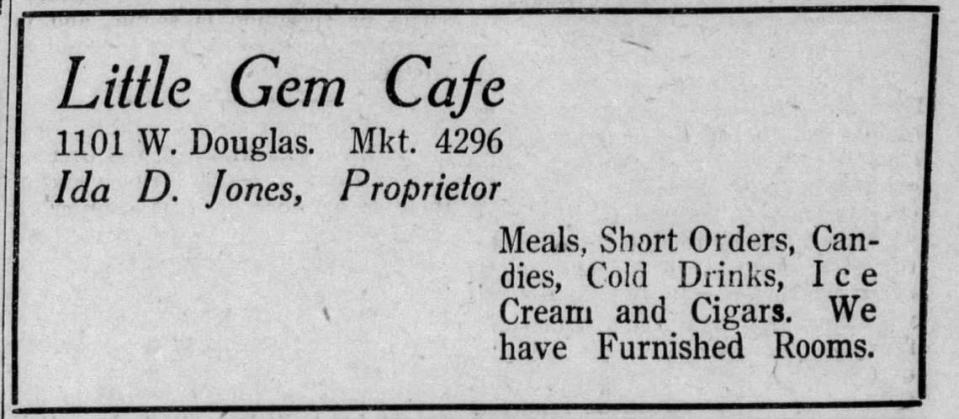
From the 1920s until around 1948, a hotel — called Fairchild Hotel — operated on the upper floors of the building. Its address was 1101 1/2 W. Douglas, and the “hotel” ghost signs could mark the old entrance for the hotel. In 1925, rooms rented for $3.50 a week.
By 1968, the upper level of the Zongker building was occupied by the Stelts Hotel, and it suffered heavy smoke damage during a two-alarm fire that destroyed the apartments on the upper level of the adjoining building at 1105-1111 W. Douglas.
“Apartment and hotel dwellers in the two buildings fled as the fire raged,” a Jan. 28, 1968, article in the Wichita Eagle read. “The occupants stood around in night clothes and underwear in the balmy weather and watched firemen battle the blaze.”
Sometime after that, the upper level of the building was removed.
Article from Jan 28, 1968 The Wichita Eagle (Wichita, Kansas)
By 1985, the building at Douglas and Seneca had been sold to Oliver Burton, who told The Wichita Eagle that he was planning to modernize the property — the last original building on the block that hadn’t been updated.
He spent around $230,000, adding the beige stucco that was recently removed and tearing down the front of the building to add parking spaces. The Zongker drugstore moved to the rear of the building but appears to have lasted only another couple of years.
The move wasn’t popular, and people complained that a piece of history was being destroyed.
“I’m not much for progress,” Bettylea Downey, a regular customer of the Zongker soda fountain in the 1940s, told the paper at the time. “The new building looks fine, but I want things to stay the way they were.”
Since then, the building has operated as a nondescript, Douglas-facing strip center with a shingled roof line. Burton’s beige stucco facade remained in place until Lange bought the building, and when it was recently removed, not only were the ghost signs revealed but some of the building’s Seneca-facing windows and doors — not seen since the stucco was put up — also reappeared.
Zongker modernization 04 May 1985, Sat The Wichita Eagle (Wichita, Kansas) Newspapers.com
Pass by today and you’ll see heavy equipment busy at work, preparing the site for Lange’s future offices.
Robertson, who is Lange’s brand manager, shared an architectural image of what the building will look like when it’s complete — sleek and modern with new siding, windows and landscaping. The ghost signs will once again be covered, so those who want to see them will want to venture over to Delano soon and take a peek.
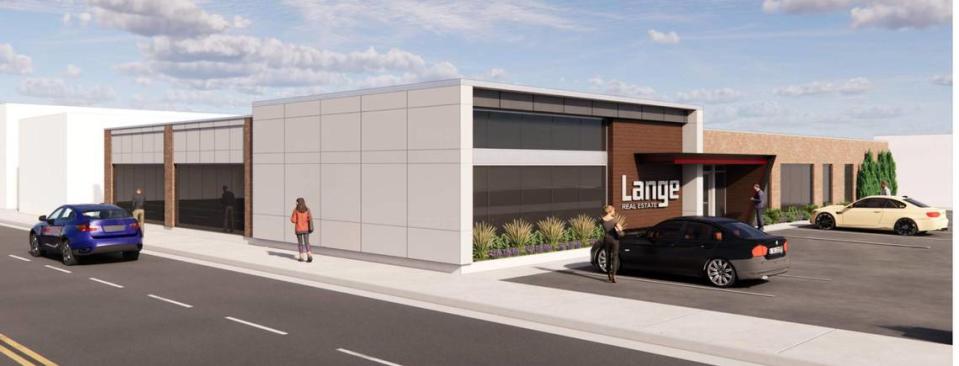
Lange now operates at 4852 S. Broadway, and the move, said Rachel Lange-Mills, Lange’s president and supervising broker, will put the business in a more centralized location to serve its growing customer base.
“The Delano district emerged as the perfect match, especially with its vibrant revitalization, access to Seneca and Kellogg, simplifying commutes for both our dedicated team and our valued clients,” Lange-Mills said.
Lange is expected to move to the new offices in October.
Robertson said that Lange owners didn’t know much about the building when they bought it other than that the front section had once stretched to the curb. He’s also become fascinated by the ghost signs in recent weeks.
Traci at the historical museum said she found out about the signs when Robertson recently reached out to her about the history of the building. It surprised her to learn that so many businesses had once operated on the corner.
When ghost signs appear, they’re such a novelty, and they force people to think about who and what came before them, she said. She’s a big fan of the North End Racket ghost sign at 18th and Broadway.
“It’s such a widow into the past,” she said.
